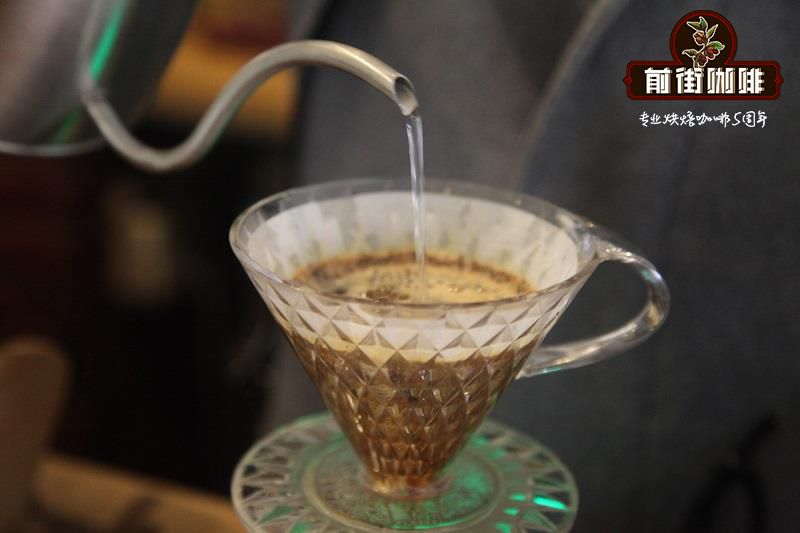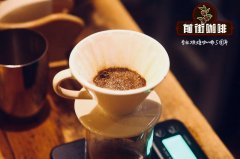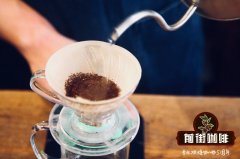What is the powder-liquid ratio of coffee? The difference between coffee powder and BREW RATIO

Professional coffee knowledge exchange more coffee bean information please follow the coffee workshop (Wechat official account cafe_style)
The ratio of coffee powder to water is more practical than that of coffee powder in the experiment.
There are several main factors that affect the flavor of hand-brewed coffee, which are concentration, temperature, grain fineness and speed. First of all, concentration refers to the ratio of coffee powder to hot water, commonly known as "powder-to-water ratio". The commonly used powder-to-water ratio is between 1:12 and 1:15, that is, 1 gram of coffee powder with 15 grams of hot water. It should be noted that concentration and extraction rate are different concepts.
Thank you for your help.
Then there is the temperature, that is, the temperature of the hot water used to make the coffee. The higher the temperature, the easier it is to extract the delicious and aromatic substances from the coffee powder; the temperature of the usual brewing water is about 85 ~ 93 degrees. When using lower water temperature, the sour taste of coffee is more obvious, while high temperature can bring better aroma.
The fineness of coffee powder refers to the thickness of coffee powder when grinding, the finer the coffee powder, the more complete the extraction.
Therefore, the concept of extraction rate mentioned just now is related to temperature and grain fineness, and high concentration does not mean high extraction rate. Take Tokyo Amber Coffee as an example, using more than 30 grams of coffee powder to extract 100 milliliters of coffee liquid, the concentration is extremely high, but at the same time using a very thick grain fineness, so the extraction rate is low, that is, the so-called "high concentration and low extraction" method.
Finally, there is the speed, that is, the total time of the whole cooking process or the frequency of the water column, for example, we increase the extraction rate through static steaming and water cut-off, which are all affected by the control speed.
Hand coffee filter cup is very knowledgeable! Flow rate data of several common coffee filter cups
Important Notice :
前街咖啡 FrontStreet Coffee has moved to new addredd:
FrontStreet Coffee Address: 315,Donghua East Road,GuangZhou
Tel:020 38364473
- Prev

Practical parameters of gouache ratio of hand-brewed coffee the ratio of hand-brewed coffee powder to water at one time
Professional coffee knowledge exchange more coffee bean information please follow the coffee workshop (Wechat official account cafe_style) Coffee powder water is more practical than the experiment hand-brewed coffee powder ratio [heavy taste] 1 cup coffee grams than black coffee milliliters), that is, the golden cup standard 112.51Ze13.5 (beans weigh more milliliters than raw water) [moderate taste] 1 121 13 (that is, golden cup)
- Next

How to adjust the ratio of coffee powder to water by hand? what factors determine the proportion of coffee extraction?
Professional coffee knowledge exchange more coffee bean information Please follow the coffee workshop (Wechat official account cafe_style) Coffee powder water is more practical than the experiment hand-made coffee powder water than hand-made adjustable parameters and principles: the above step () indicates that the parameters that can be adjusted according to different beans can be adjusted after many experiments take the most appropriate value, the experience value is very important! Let's take shallow peas as an example.
Related
- Beginners will see the "Coffee pull flower" guide!
- What is the difference between ice blog purified milk and ordinary milk coffee?
- Why is the Philippines the largest producer of crops in Liberia?
- For coffee extraction, should the fine powder be retained?
- How does extracted espresso fill pressed powder? How much strength does it take to press the powder?
- How to make jasmine cold extract coffee? Is the jasmine + latte good?
- Will this little toy really make the coffee taste better? How does Lily Drip affect coffee extraction?
- Will the action of slapping the filter cup also affect coffee extraction?
- What's the difference between powder-to-water ratio and powder-to-liquid ratio?
- What is the Ethiopian local species? What does it have to do with Heirloom native species?

